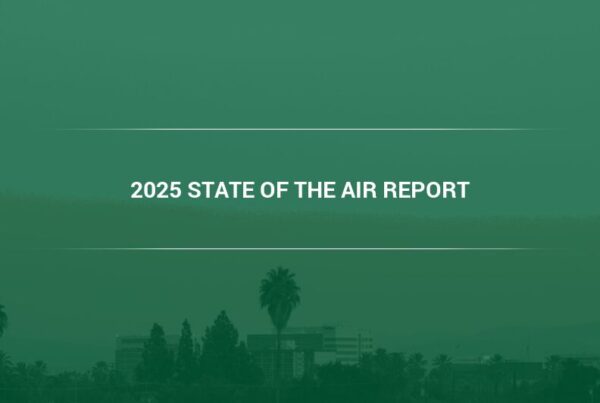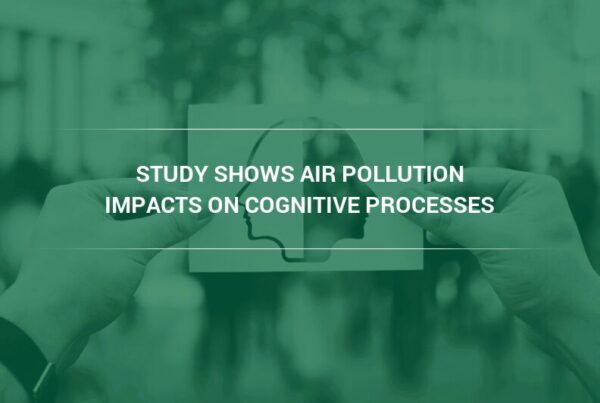California’s smog plan has been introduced to cut down on the smog in southern California. How will the plan achieve this, and what challenges are in front of it?
Southern California has struggled with its smog problem for decades. California has passed many different regulations in an attempt to cut down on smog levels by having polluters adopt cleaner technology. However, the California Air Resources Board recently voted unanimously to approve a 15-year smog cleanup plan.
Though the plan still needs approval from the Environmental Protection Agency, the South Coast Air Quality Management District (AQMD) believes California’s smog plan will move Southern California in the right direction of cutting back on emissions and improving air quality.
Unlike previous plans to fight smog, this plan is relying largely on financial incentives to convince companies to reduce their emissions.
California’s Smog Problem
The South Coast basin contains the Los Angeles, Orange, San Bernardino, and Riverside counties. This basin has the nation’s highest ozone pollution level and does not meet federal air quality standards. Because of this the state is required to have plans in place for achieving enough pollution reduction to meet those standards.
“The plan will endeavor to meet the federal health standards specified by the EPA and reduce the harm done to 17 million people from the air within the country’s smoggiest area,” says Kevin Wood, Camfil USA Vice President Sales & Marketing. “California’s smog problem is so severe that around 1600 people die every year from air pollution in the greater Los Angeles area, and thousands more have asthma-related emergency room visits.” (1)
Much of the pollution comes from diesel trucks, which are the main source of nitrogen oxides throughout the region. Other cargo and transportation industries with various ports and warehouses in the area also contribute to the problem.
The AQMD’s last air quality management plan was passed in 2012. The new plan was conceived as an update to the old plan, meant to meet the new federal ozone standards. While SoCal’s air quality has improved over the past few decades, progress has fallen off over the past few years.
California’s Smog Policies
The 15-year duration cleanup plan will set aside $15 billion worth of financial incentives to encourage companies to reduce emissions through actions such as replacing existing fleets of trucks with low emission alternatives. California’s smog policies will also have airports reduce emissions from cars, trucks and other equipment but will have exemptions for seaports and warehouses.
The new plan will over time eliminate the current pollution-credits marketplace which is responsible for regulating emissions from oil refineries and similar major polluters. The plan demands that those facilities cut their emissions of nitrogen dioxide by 5 tons by 2025, and is aiming to replace the marketplace with pollution control regulations as soon as it is feasible to do so.
“The AQMD left in the plan provisions which leave the decision to cut down on pollutants up to individual companies. However, regular updates are required on the status of pollution cuts, and the California Air Resources Board reserves the right to take action if interim goals aren’t met,” says Wood. (2)
“The cleanup plan hopes to cut down on smog by 45% by the year 2023, and shave off another 10% of emissions by 2031,” continued Wood. “The AQMD governing board will oversee the operation and approve certain requirements over the next few years to ensure goals are met.” (3)
The Challenges of California’s Smog Plan
When it comes to the challenges of California’s smog plan, one of its biggest issues is the fact that the plan is deeply unpopular with many people. The decision to leave the reduction of emissions up to the discretion of industry was controversial, to say the least.
“Critics of the plan argue that it lets large polluters off the hook, and favors business over the health of the public,” said Wood. “Companies are allowed to avoid installing pollution controls which are readily available. Further, the plan’s critics say that the federal provisions the plan rely on to ensure compliance does not exist and that the plan needs of billions of dollars that the state does not have.” (4)
The exemptions that allow ports and warehouses to duck complying with emissions standards were much maligned, as state regulators, environmentalist groups, and lawmakers argue that clean-air goals cannot be met if those two critical groups do not do their part in reducing emissions.
However, the plan’s supporters argue that they are not allowing warehouses and ports to skate by. They believe they can achieve more by inviting everyone to comply willingly at first, as they worry that ports and other operations would simply sue to block the implementation of emissions-cutting regulations.
Furthermore, business leaders have stressed that the air quality in Southern California is improving largely thanks to industry willing to work with regulators to reduce emissions of air pollutants. Industry members argue that regulating the operation of warehouses would just stifle innovation, and meanwhile, trucks are getting cleaner every year.
California’s smog plan has some real trials to overcome, and it must succeed in balancing the desires of both industry leaders and environmental activists. Though the plan may not be optimal, it might achieve further reductions in air pollution if it is successful.
For more than 50 years, Camfil has been providing the most technologically-advanced air filtration systems. Camfil has built its reputation on providing quality. Camfil operates under the guiding principle that clean air is the right of all humans no matter where they live.
Southern California has struggled with its smog (ozone) problem for decades. Camfil produces various types of ozone removal air filters ideally suited to protecting the health of individuals from this dangerous gas. Some buildings in Los Angeles have been using Camfil air filters since the 1960’s as this continual problem, primarily related to the number of automobiles, continues to plague the area.
California has passed many different regulations in an attempt to cut down on smog levels by having polluters adopt cleaner technology. However, the California Air Resources Board recently voted unanimously to approve a 15-year smog cleanup plan and Camfil is in the fight with California and the world in a commitment to provide clean air filters for the indoor air we all breathe.
Lynne Laake
Camfil USA Air Filters
T: 888.599.6620,
E:Lynne.Laake@camfil.com
F: Friend Camfil USA on Facebook
T: Follow Camfil USA on Twitter
Y: Watch Camfil Videos on YouTube
Sources:
http://www.latimes.com/local/lanow/la-me-ln-smog-plan-20170303-story.html
http://www.pe.com/2017/03/23/state-air-board-oks-southern-california-smog-plan-at-riverside-meeting/
http://www.scpr.org/news/2017/03/03/69565/aqmd-approves-new-smog-cutting-plan/
http://www.latimes.com/local/la-me-ln-smog-plan-20160630-snap-story.html



